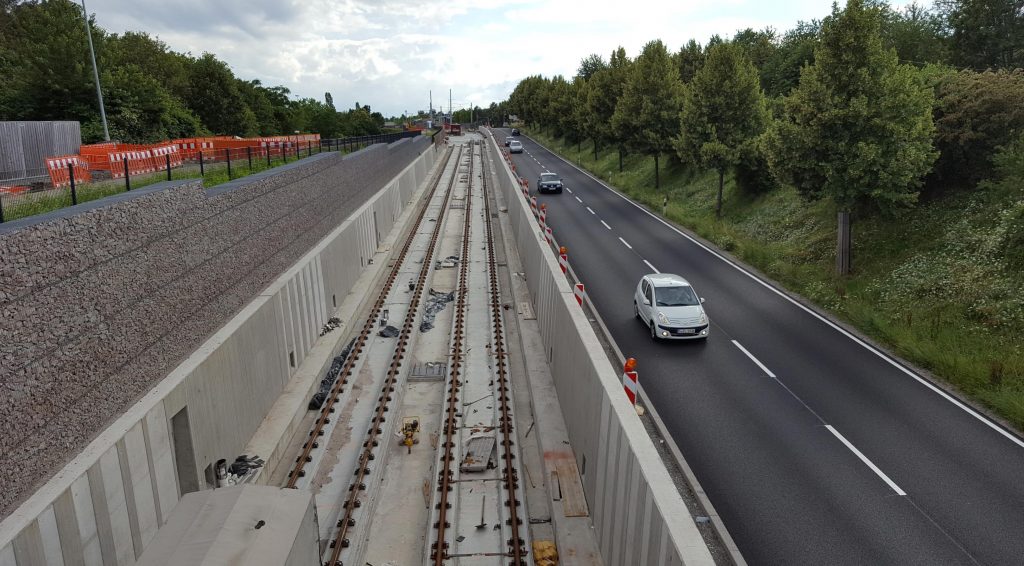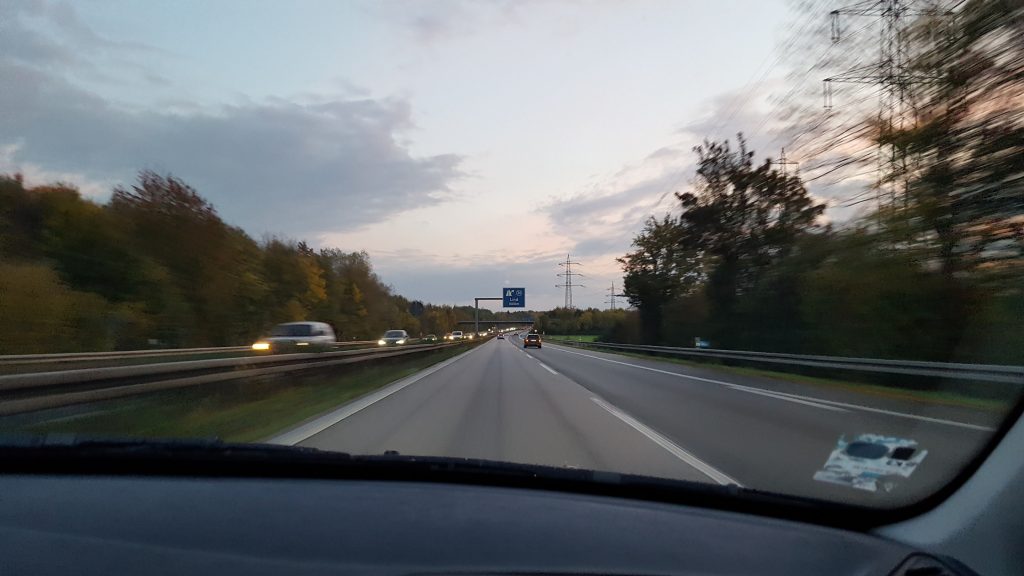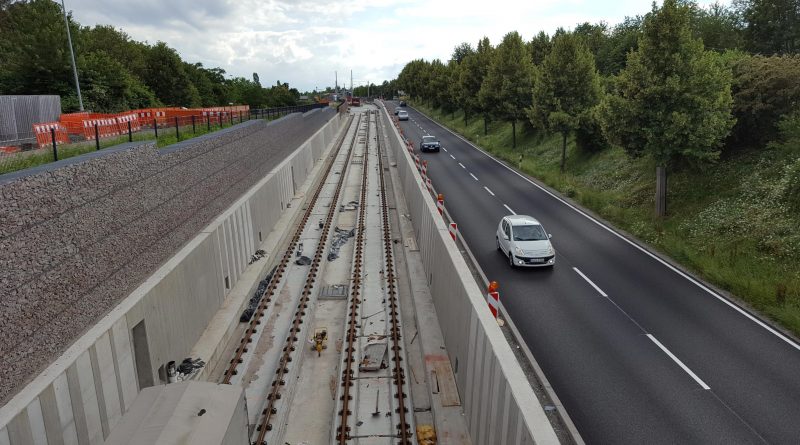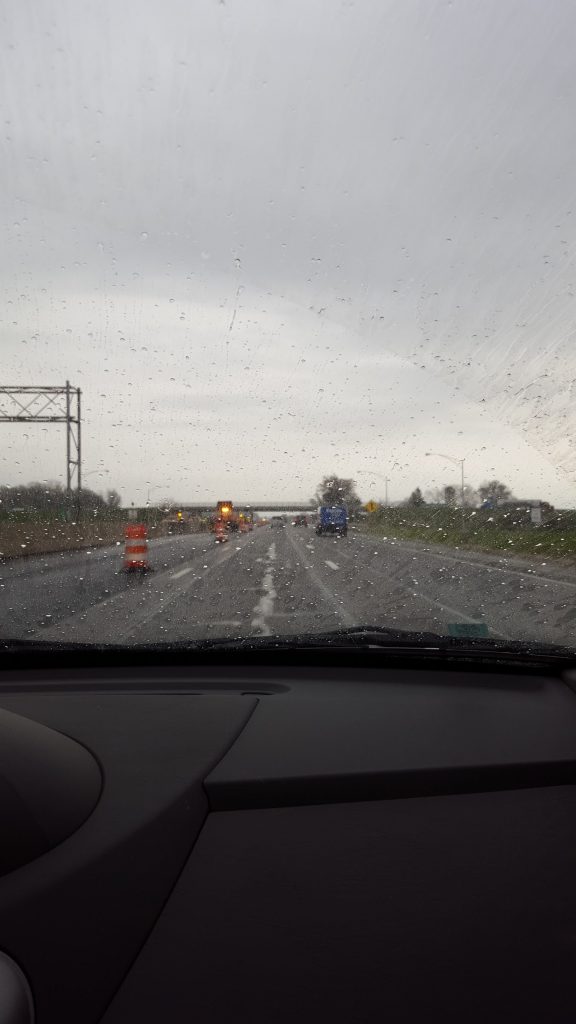Black Ocean Strategy? Private Firms Are Looking To Cut Themselves A Slice Of The Infrastructure Pie.
My capstone project looked at the divide between the public sector and private sector as far as next-generation infrastructure investment. In practical terms? This is a question of how our roads are in bad shape. It’s expensive to get around. And, while there’s not enough money for the government to fix it without raising taxes, there’s also no good framework for the private sector to address the issue. But privatization isn’t enough.
It promises to save costs and improve access but usually does the exact opposite of both. And it’s not simply enough to say, “well, we should raise taxes on the wealthy to pay for it!” Nor is it enough to say that the public sector is even equipped for the task. A recent audit of Michigan’s DOT, for example, shows that the road “engineering agency,” as one interviewee termed it, has routinely bungled management of warranties associated with roadways that didn’t meet the required performance criteria. So, what’s really going on?
Wall Street, or, Walls and Streets, Inc.
This piece was perhaps, ah, presaged by my recent article on tech’s new investments in citybuilding. Some of these have been successful and others have dropped off the radar entirely. Google (via Sidewalk Labs, Sidewalk Infrastructure Partners, Cavnue) and Morgan Stanley (via Morgan Stanley Infrastructure Partners, a.k.a. MSIP, a.k.a. the Chicago Parking Meter People) are two companies that are heavily invested in the question of public infrastructure that I looked at specifically.
Infrastructure is attractive from a business standpoint for a few reasons.
First, it’s a sensible form of diversification on their parts. Low inflation in the national economy means companies have little incentive to invest the trillions in cash they’ve been sitting on. Second, infrastructure represents a few different holy grails of finance. Infrastructure exists often in relatively uncontested market spaces. There’s not really a competitive market for roads, for example. There are just, well, roads! And power generation and transmission systems, for example, often exist in monopolistic or duopolistic market conditions. They’re usually heavily regulated, which is an annoying value proposition for investment. But the tradeoff is that utilities get clear, predictable demand and face clear expectations. This makes planning easier than, say, forecasting of iPhone sales. Is this indeed a “blue ocean strategy” on their part?

Blue Ocean Strategy: The Quest For Uncontested Market Territory
The less-than-illustrious world of business literature is full of heteropatriarchal language about conquering, expanding territory, blah blah blah. Such is often the case with so-called groundbreaking works about business strategy, or what have you. The idea of “blue ocean strategy” is among these. INSEAD’s W. Chan Kim and Renée Mauborgne wrote the acclaimed 2004 book about how companies can “create uncontested market space and make the competition irrelevant.” Conquer! Destroy! Kill, kill, kill! Simplifying a bit, the idea is that companies can succeed by creating products or services that are so new that the company won’t have a competitor for it. A “blue ocean” is as opposed to the “red ocean” that, continuing with the bellicose, heteropatriarchal preoccupation, is filled with the blood of fighting creatures. Yawn.
Beyond Slow Growth Rates
There are a few interesting ideas in the book, certainly. And there are also a few valid critiques. But what’s interesting about the theory of blue ocean strategy is that not too many companies actually pull it off. Companies build products that flop all the time. Cinnamon-Toast-Shrimp-As-A-Service?! Venture capitalize me, baby! Nah. But for real– far more rare is the idea of busting into a new market space that has absolutely no competition, or only very limited threats of market entry. It’s hard to do this for a few reasons. Mostly, western capitalist economies are growing at a much slower rate than they were half a century ago.
Efficient Market Information vs. Profitable Monopoly
But also? The markets that do exist in these mature economies are also usually very mature. Information is well-developed. There is this hypothesis of the efficient market, which says that, basically, everything that you know, someone else already knows, and this knowledge has been priced into markets. This means that it’s hard to get at alpha, a.k.a., returns that beat the market. So, any time you can bust into a space where you have little to no competition or have very predictable sources of revenue, this is attractive. Utilities are therefore focused on big money capex and efficiency improvements. They can’t exactly just push to sell more electrons like Apple can push to sell more iPhones. Nor is there really a way to, say, put a new operating system inside those electrons, or whatever.
Ok, so… Black Ocean Strategy?
In the case of infrastructure specifically, I’ve coined this as black ocean strategy, not a blue ocean strategy. We’re not talking about a clear ocean. We’re talking about asphalt. Or even oil. MSIP, for example, is heavily invested in energy, water, and– wait for it- transportation! From my paper:
While it is unclear what the exact capitalization of MSIP’s is– the particular division isn’t so much as mentioned in the firm’s 2019 10-K filing with the Securities and Exchange Commission- the operative issue seems to be that Wall Street is increasingly interested in private money controlling public works for profit. Without financial data, it is impossible to determine the amount capitalized with each division, but 36% of MSIP’s listed investments are in the United States, 44% are in energy and utilities, and 28% are in transportation.
Perhaps the most famous investment of MSIP is the Chicago parking meter deal. It was characterized as a “public-private partnership,” but it was really, well, privatization. The city sold access to the meters in exchange for a lump sum of cash to plug a massive budget deficit under Daley the Lesser. What’s worse? Well, the valuation MSIP offered the city was actually less than the valuation MSIP then used to pitch to investors for the deal. It gets wilder still.
This is undebatably disingenuous. But it’s not actually illegal. The later terms under which the investment was revalued was private, so MSIP wasn’t actually required to make public any details about it. There is a reason why firms like this employ legions of very smart attorneys. Stephanie Farmer was unequivocal in her characterization of it in a 2013 article that said that “Chicago’s parking meter P3 is recognized as an exemplar of how not to organize a P3.”
MSIP vs. Sidewalk Labs
In comparison, Sidewalk is investing in technology and information. Smart city stuff– whatever that means. Sidewalk isn’t buying power plants or oil refineries or water companies. Well, not yet, at least. But Sidewalk Infrastructure Partners– by way of Cavnue, for example- is actually trying to build roadways. The subsidiary– a startup within a startup, if you will- poached Mike Duggan’s chief mobility officer Mark De La Vergne last year to lead the pilot in Michigan, the first in the country. Cavnue’s own press release from last summer is pretty candid about its objectives. The venture seeks to “expand opportunity by increasing access to personal and shared mobility—all while accessing new revenue models to pay for it.”
Hold up. Is this the future of infrastructure?
Probably not. But it’s definitely what’s for dinner in the meantime. The state is broke. Cities are broke. The governor doesn’t really care about transit. And MDOT for damn sure doesn’t care about transit. (Unsurprisingly, Jeff Cranson and Diane Cross, media relations liaisons for MDOT, declined multiple requests for comment. “It sounds like you know people at Cavnue,” Cranson wrote in a pithy, 17 March, 2021 e-mail [Narrator voice: He did not, actually, know people at Cavnue.]). A number of interviewees had some pretty interesting comments. (I’m not identifying them by name because they were not authorized to speak on behalf of their respective companies, but they were all familiar with the project).
One interviewee involved with the development of Cavnue was unequivocal in saying that fixed-route transit needed to be an integral part of the project because otherwise, well, it wouldn’t work. Cars alone are not enough. Cavnue, the interviewee said, should focus energy and interest on autonomous technology, not detract from the viability of transit. The interviewee did, however, recognize why transit was a harder value proposition from a political standpoint. (Especially in a state where, you know, the guy who headed the transportation appropriations committee is married to a woman who led a seditious revolt against the United States in which fascist thugs murdered police officers). Um. Anyway. The point was that it’s politically hard to say, “hey, we’re going to take away this highway lane and use it for buses.” However, you can much more easily say, “let’s incorporate BRT into a road that has tech for autonomous cars and shuttles,” or what have you.
The Duality of Townsend’s “Ghost Road”
This provides us with another glimpse back at the concept of Anthony Townsend’s concept of the Ghost Road. Or, of another potentially disastrous market failure in the form of what Michael Heller has termed the tragedy of the anticommons. In this scenario, a company like Cavnue could maintain exclusive control of certain sections of roadway, denying access to parties who would otherwise be able to use the roadway for what economists would call a “socially optimal” outcome.
Fortunately for commuters traveling on Interstate 94 between Detroit and Ann Arbor, this is, however, not the objective of Cavnue. Though primarily focused on autonomous vehicle proof-of-concept, the project is substantially experimental in nature, attempting to come up with a concrete– literally- and socially beneficial project that made use of, in the words of one interviewee, “the obscenity of how much money” big tech companies are presently sitting on. And going back to the growth thing?
Ensuring Access Means Ensuring Opportunities for Growth
A manager from the Big Three familiar with the project put it this way: “If [Cavnue is] a requirement for AV’s to work, do you really believe that every city, every state, in every country, should build this dedicated infrastructure? It slows down your growth opportunity. No AV company would think of this as the way to expand their growth opportunity.” Townsend’s Ghost Road creates a potential duality. Cavnue could show us a way to a safer, greener future. Or it could restrict access. None of the three respondents I’ve mentioned here thought that Cavnue could succeed without categorically including transit access. Transit access means that everyone can get access– not just someone who can afford, say, a $50,000 Mustang Mach-E.

Eyes on the Prize: Public Investment For All
The question of “why can’t the public sector just pay for it by itself” is challenging, but must be explored well beyond the reductive conclusion that “we need to tax rich people and corporations more.” I mean, sure. It would be great if governments had the money to do everything nerdy urbanists like me wanted. It would also be nice if I could eat tres leches cake from Mexicantown Bakery every day without worrying about the resultant nutritional catastrophe.
For now, we should be focused on ensuring access through private infrastructure projects like this. They’re going to happen whether you or I want them to. Are they going to change the world? I don’t know, maybe? They could certainly be an interesting proof-of-concept. And if it means I’m eventually able to ride an express bus to the airport at 85mph? I’m definitely in. Convincing the likes of MDOT might be challenging. But it sounds like the people who are involved with these projects are interested.
Check out Kim & Mauborgne’s 2004 book here, or its well-received 2017 followup. Or check out their website. This article is, like so many others before it, part of a series on the infrastructure and mobility of to-morrow. Please support independent journalism!






